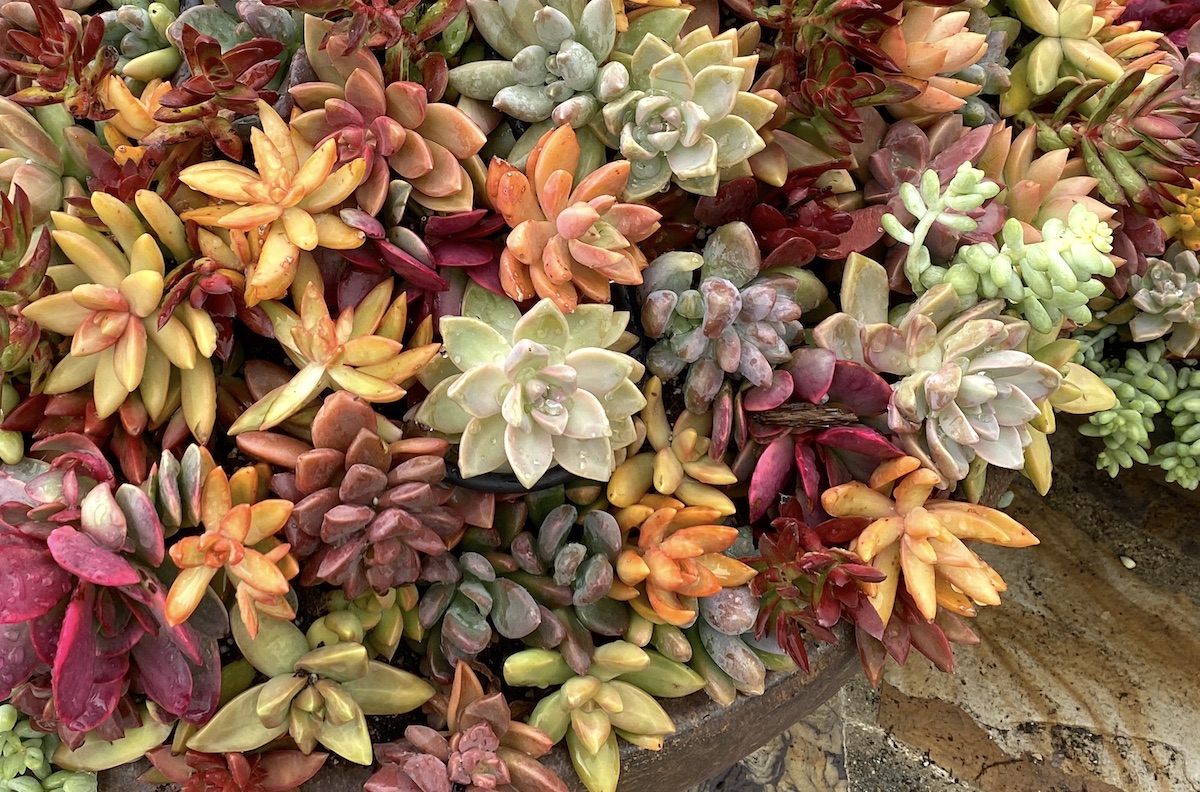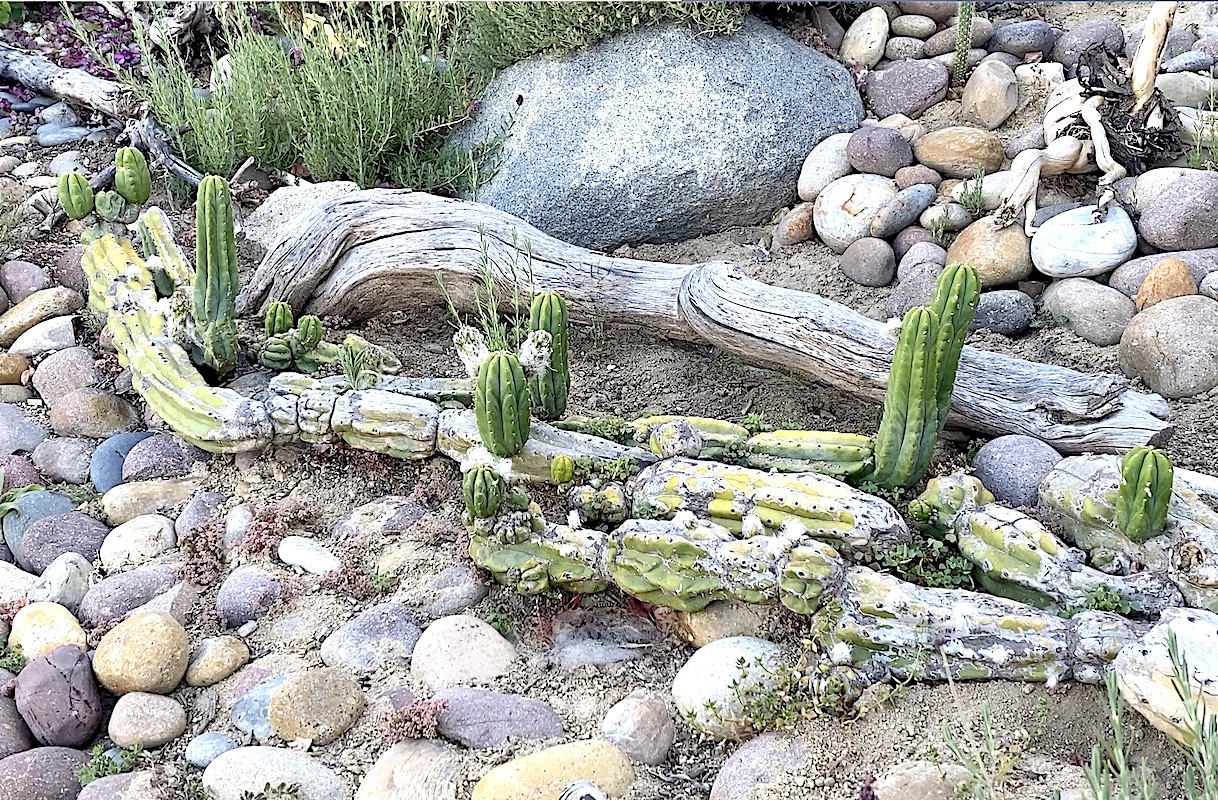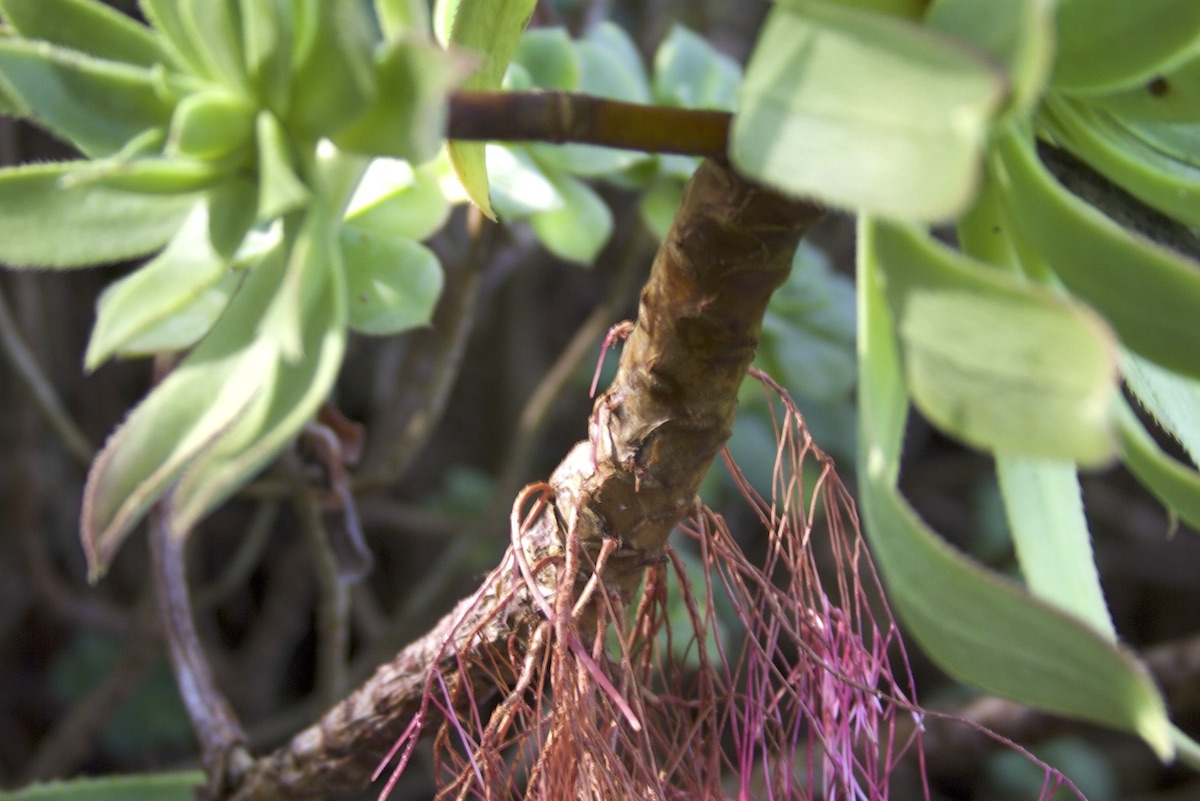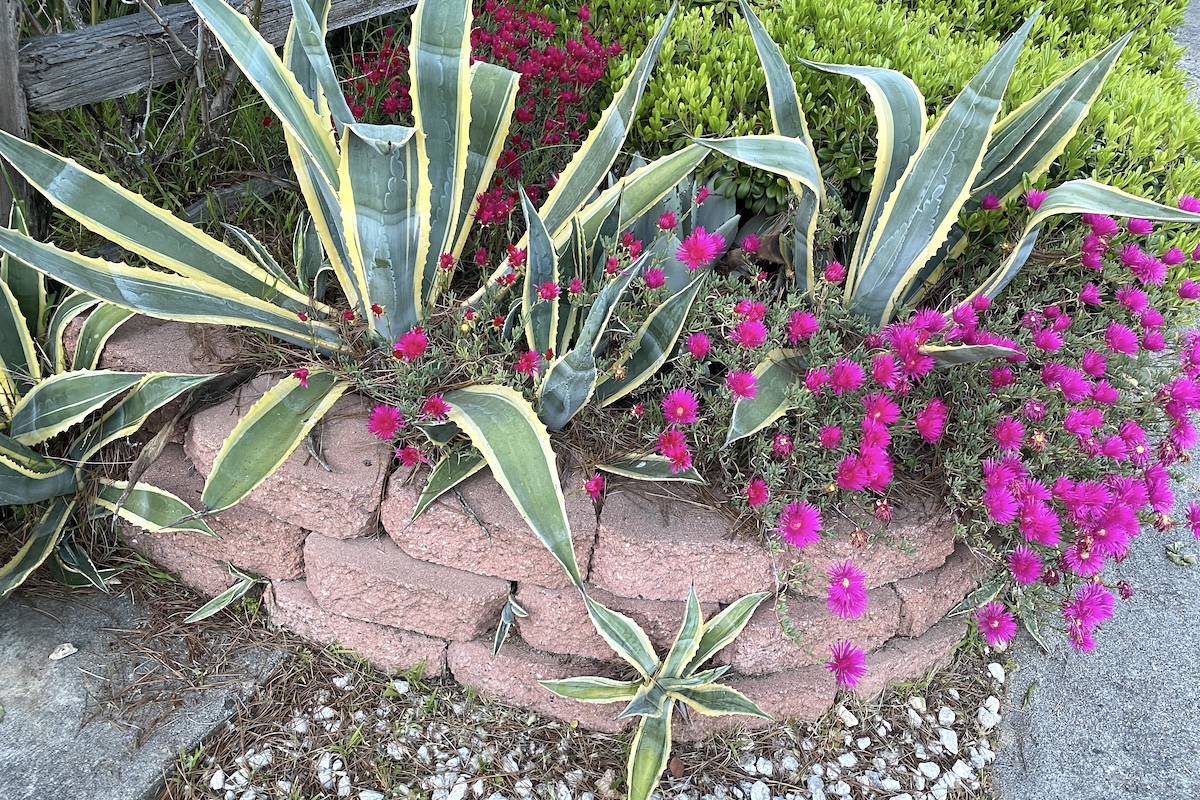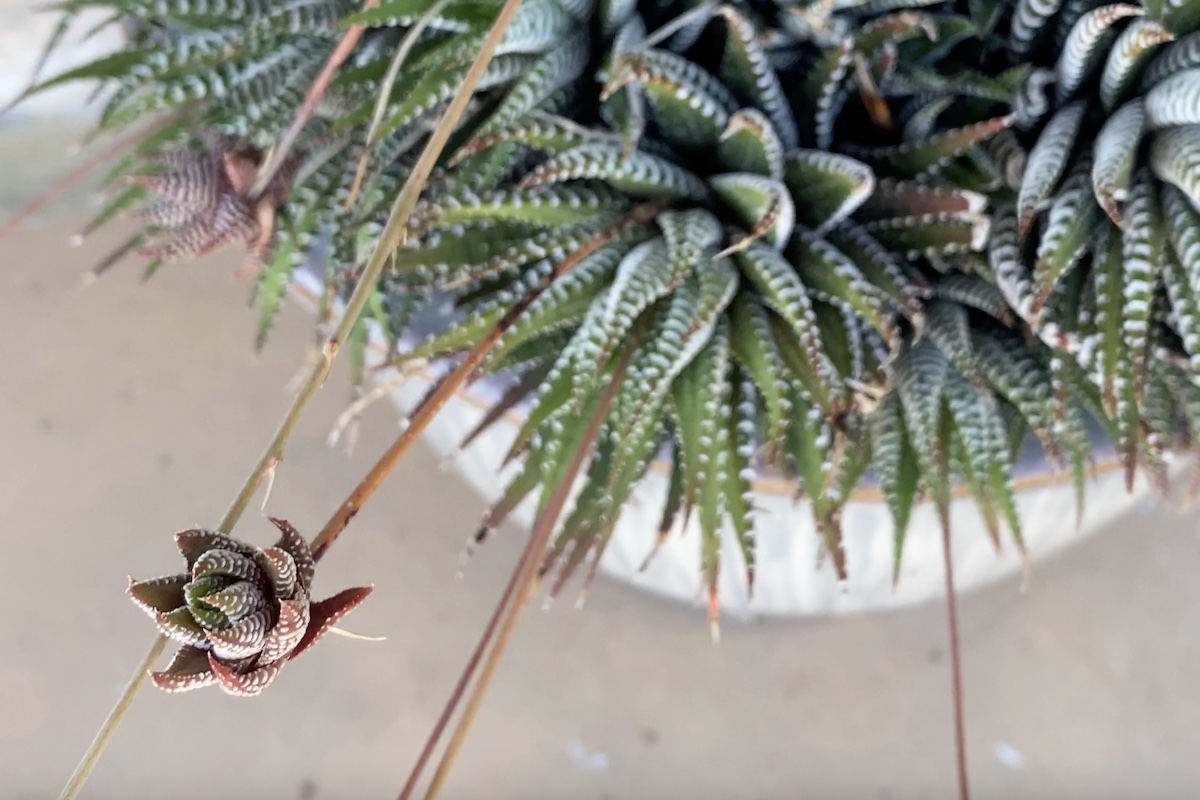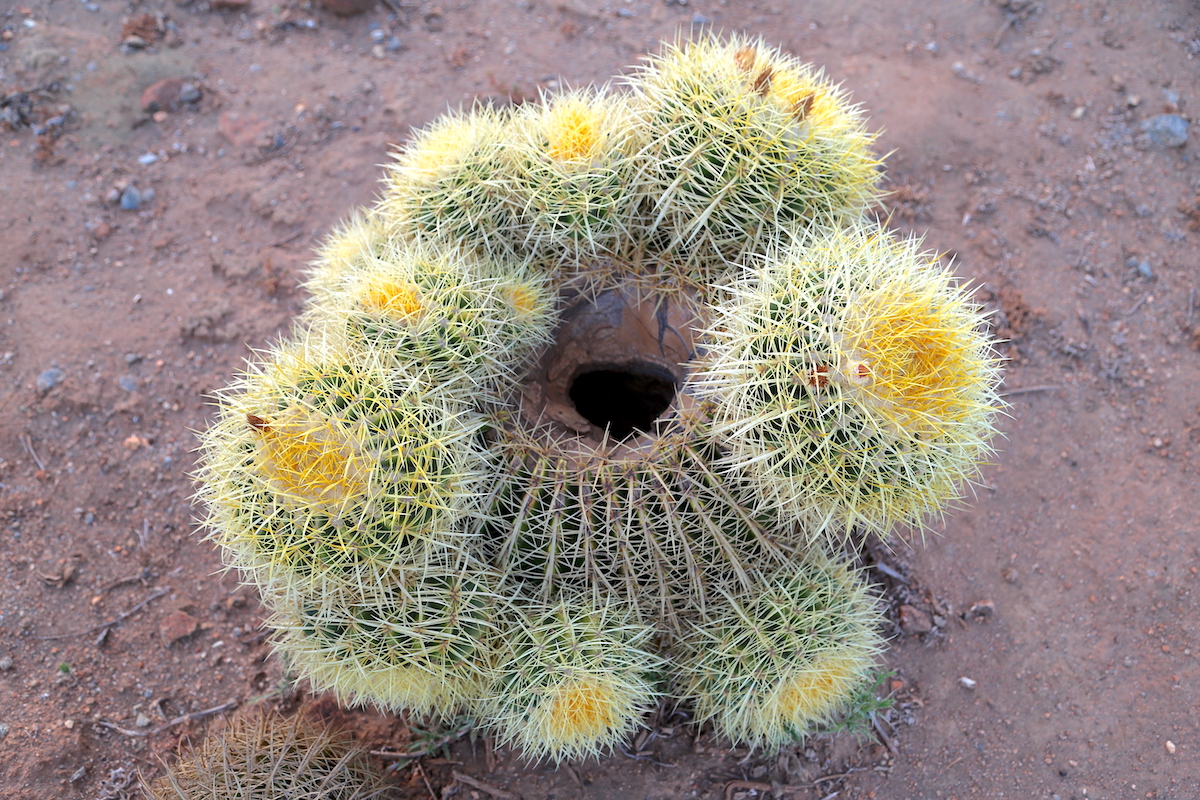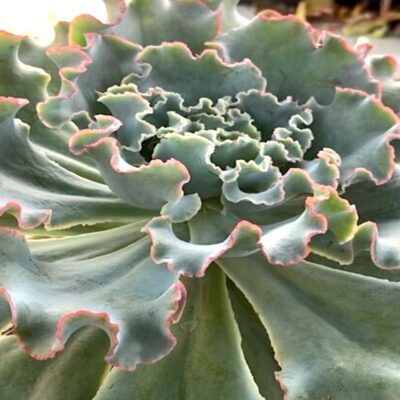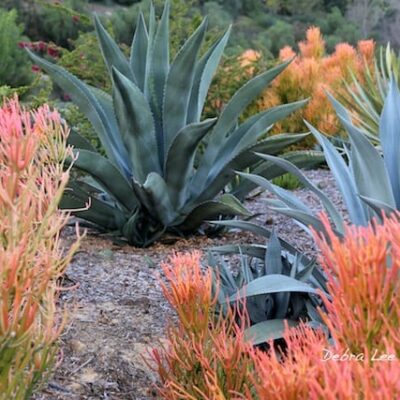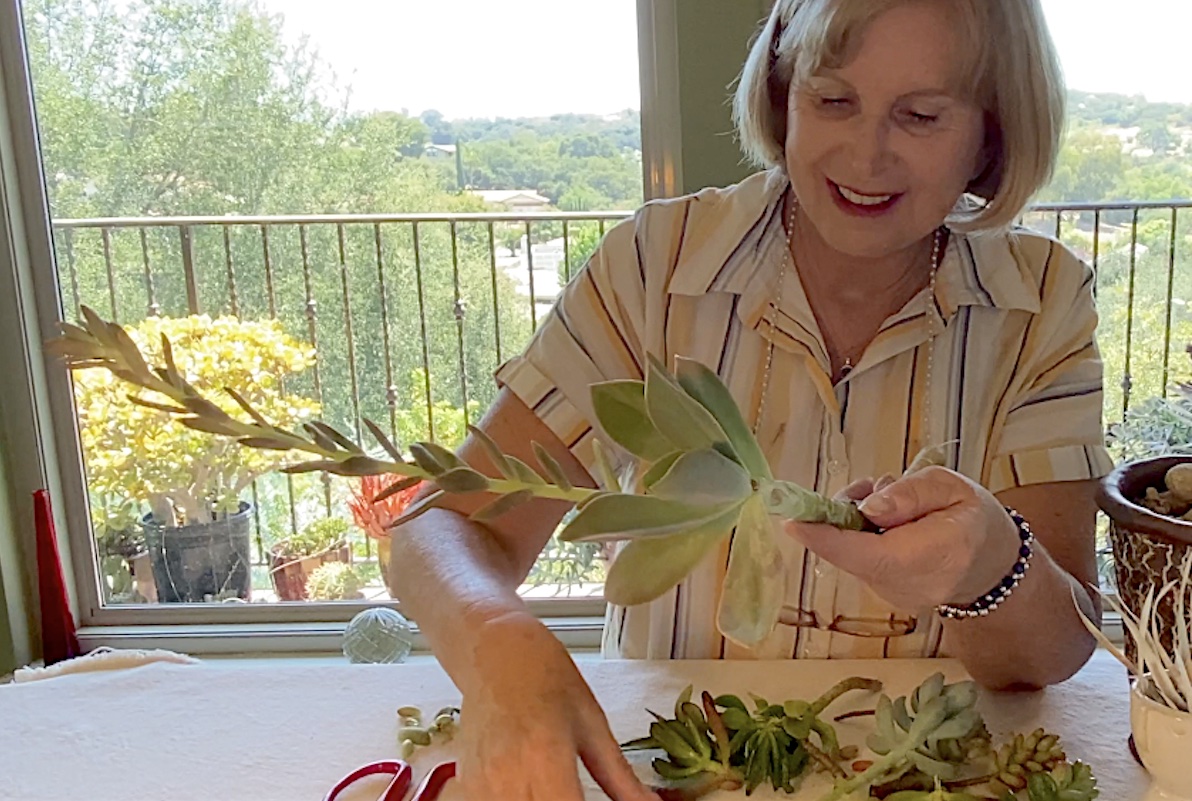
Propagation: What Your Succulents Want You to Know
In my new video I show and explain how your succulents want to propagate, if you help them or not...and whether you like it or not! When propagation happens, you may be delighted or dismayed. Delighted, because you get free plants; dismayed because you get too many.
It all comes down to observation. Succulents are good at telling you what’s important to them. You'll soon discover how yours want to reproduce in your garden or pots. See examples from the video below.
Note: I use the terms "offsets," "plantlets" and "pups" interchangeably to refer to baby plants that grow from the parent via a sort of botanical umbilical cord. Depending on the type of succulent, this pipeline of nutrients might be above or below the soil.
When leaves pop off easily
You know that little snap when a plump leaf falls off? Leaves of sedums, graptopetalums, pachyphytums, and pachyverias tend to fall off if you merely brush against them. This is infuriating, but do consider the plants’ perspective: They’re simply trying to clone themselves...and you can help. Tuck the fallen leaf where it’ll produce its own little leaves and roots.
When stems work best for propagation
Succulents with stems propagate readily from cuttings, and jade is one that drops stems for that very purpose. If this fallen jade stem could talk, it would say, “Plant me please.” Notice how drying out a bit has made it curl. It's all set to go, with roots that point downward and leaves that go upward. Both emerge from meristem (growth) tissue.
What cacti want you to know
If you wonder why cacti tend to fall over or break apart easily, consider how doing so helps them propagate. Columnar species tend to be shallow-rooted and top-heavy. By falling over, they're able to launch a colony.
What aerial roots are all about
Stems on plants may send roots into thin air, like this aeonium. Aerial roots are almost always about propagation. This succulent is saying, "I'm SO ready to leave home and start a family!"
What pups are trying to tell you
Pups grow from underground roots that run parallel to the surface of the soil. These are white until they break through. When exposed to the sun, root tips turn green, photosynthesize and form new leaves and plants.
You may think pups look cool, like the Agave americana “Marginata’ above with feral plantlets poking out of gaps in a terrace. No! They’re baby alligators, cute until they get huge.
When baby plants form on leaves or flower stems
Haworthias are efficient at creating offsets from their roots, but every so often a plant will produce one or more plantlets on a flower spike. As the baby plant grows, it gets heavier. Gravity lowers it to the ground where it takes root---hence the long stem. Other succulents that do this include Crassula multicava and bryophyllums.
When tissue damage produces baby plants
Cacti, agaves, mangaves and other succulents may produce offsets as a result of tissue damage. Above, a gopher ate the root of this barrel cactus up into its core, which stimulated the plant’s meristem tissue. Damaging the meristem is a method professional growers and collectors use to propagate succulents. They may, for example, cut out the cores of agaves, then remove the little clones that result.
What yuccas want you to know
Because a yucca’s lower trunk is a water tank, it'll get by on rainfall alone once established. Don’t plant a yucca near your home’s foundation, pipes or anything that an ever-expanding, bulbous base might encroach upon. I prune my yuccas to make them fuller and more shrublike. And if I want more succulent trees, the cuttings root readily.
When succulents need your help
Leggy aeoniums and echeverias that have ever-smaller rosettes atop naked stems want your help with propagation. Cut off the top along with enough stem to anchor the rosette, set it aside until roots form, then plant in good soil.
The above is merely an overview of the 18-min video. Types of succulents in the video include sedums, agaves (large and small), echeverias, aeoniums, crassulas, graptoveria, graptosedum, cacti (paddle, columnar, spherical), kalanchoes (bryophyllums), sempervivums, aloes, euphorbia, haworthias, stapeliads and yuccas.
Have you had an interesting or potentially helpful experience propagating your succulents? Please share it in the Comments below!
Related Info On This Site
How to Behead and Replant Echeverias
Fancy ruffled echeverias—those large, flowerlike succulents—eventually need to be beheaded and the rosettes replanted. This is a bother, but it comes with a benefit: New clones will form on old, headless stalks. But not always. Here’s how to ensure success.
How to Propagate Succulents
How to Propagate Succulents Learn the many ways to make more succulents from existing plants Recognize growth-producing tissue Most succulents can be propagated vegetatively—via stem cuttings, pulling apart offsets, or rooting leaves. The key is to locate the growth tissue that grows roots. This meristematic tissue is at… bands on stems where leaves once were attached the base…
Succulent Basics, Must-Do’s, FAQs, and Essentials for Success
Below are succulent basics, must-do’s and answers to FAQs—the essentials for growing succulents successfully. If all this is new to you, you’ll want to refer to this page often. And even if you’re experienced, you’ll find it a great resource!

